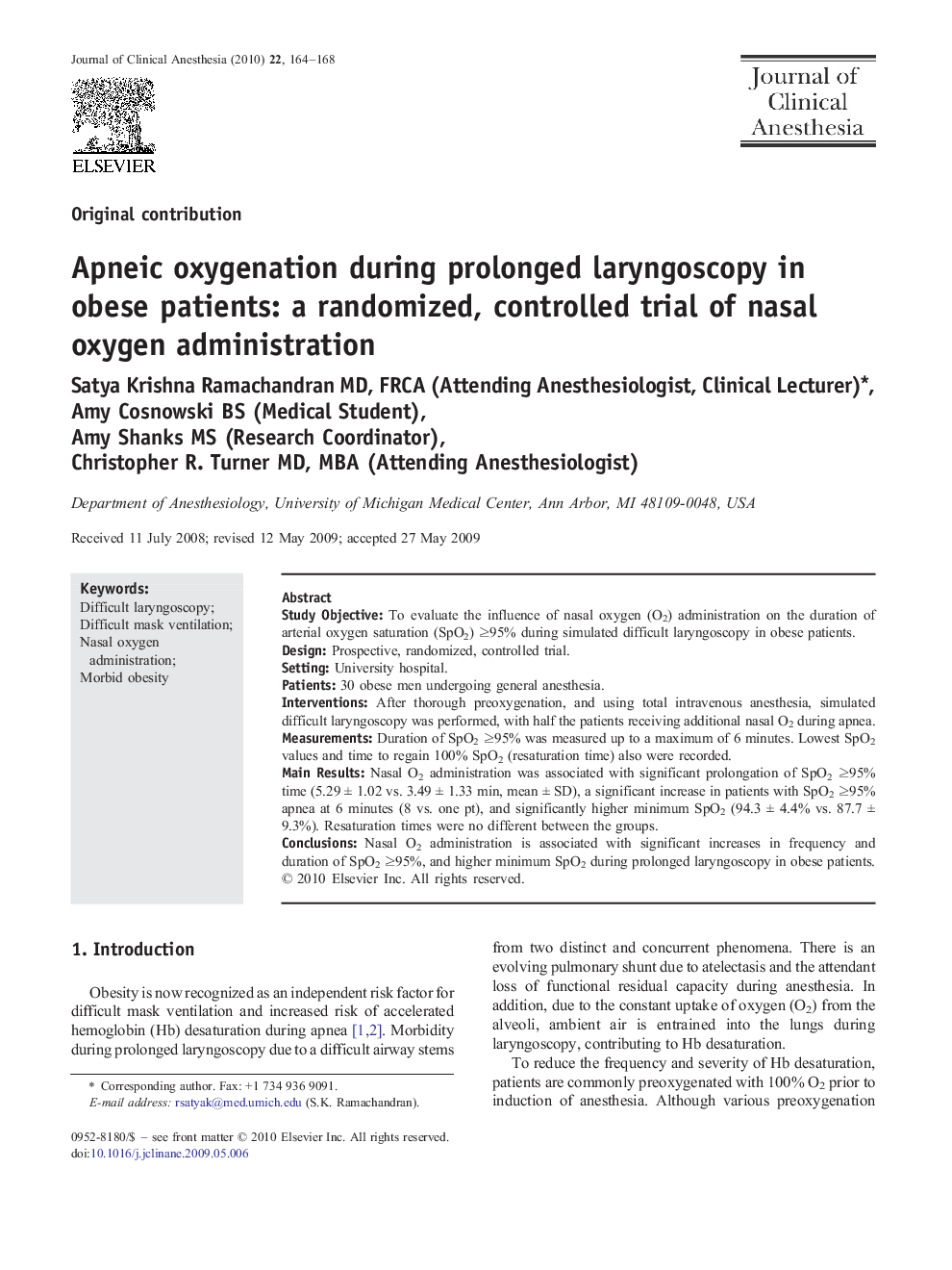| Article ID | Journal | Published Year | Pages | File Type |
|---|---|---|---|---|
| 2763175 | Journal of Clinical Anesthesia | 2010 | 5 Pages |
Study ObjectiveTo evaluate the influence of nasal oxygen (O2) administration on the duration of arterial oxygen saturation (SpO2) ≥95% during simulated difficult laryngoscopy in obese patients.DesignProspective, randomized, controlled trial.SettingUniversity hospital.Patients30 obese men undergoing general anesthesia.InterventionsAfter thorough preoxygenation, and using total intravenous anesthesia, simulated difficult laryngoscopy was performed, with half the patients receiving additional nasal O2 during apnea.MeasurementsDuration of SpO2 ≥95% was measured up to a maximum of 6 minutes. Lowest SpO2 values and time to regain 100% SpO2 (resaturation time) also were recorded.Main ResultsNasal O2 administration was associated with significant prolongation of SpO2 ≥95% time (5.29 ± 1.02 vs. 3.49 ± 1.33 min, mean ± SD), a significant increase in patients with SpO2 ≥95% apnea at 6 minutes (8 vs. one pt), and significantly higher minimum SpO2 (94.3 ± 4.4% vs. 87.7 ± 9.3%). Resaturation times were no different between the groups.ConclusionsNasal O2 administration is associated with significant increases in frequency and duration of SpO2 ≥95%, and higher minimum SpO2 during prolonged laryngoscopy in obese patients.
